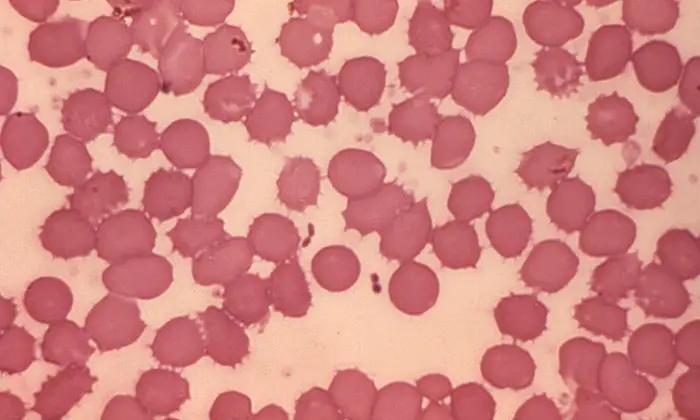A plague is an uncommon infection in cats. The disease is caused by the facultative, anaerobic, gram-negative bacteria; Yersinia pestis. The organism has been sustained for centuries y chronic bacteremia in wild rodents, including rock squirrels, ground squirrels, and prairie dogs. The consumption of wild rodents and flea bites mainly infects the plague in cats.
Although infections in domestic animals are uncommon, domestic and feral cats are susceptible;e to Y pestis infection. Cats are the sources of plague infection in humans, and cats must e considered a significant zoonotic disease. Dogs are also susceptible to plague, but their incidence rate relatively lower than cats.
Pathophysiology of Plague in Cats
The incubation period depends on the route of entry of the organism; 2-6 days with flea bites and 1-3 days after inhalation or ingestion. Typically there is evidence of neutrophilic leukocytosis with a left shift and lymphopenia and hyperglycemia, azotemia, hypokalemia, hypoalbuminemia, hypoalbuminemia, hypochloremia, hyperbilirubinemia, and increased SAP and ALT activities.
Transmission of Y Pestis Organism
The organism is spread between rodents by flea bites. Humans get infections from the bite of infected fleas, contaminated with broken skin, inhalation, and ingestion of microdroplets. There are several reports in which cats are primarily responsible for pneumonic plague in humans.

Clinical Signs of Plague in Cats
There are three forms of feline plague; bubonic, mnemonic, and septicemic. After ingestion of infected rodents by cats following signs developed:
- Fever.
- Lymphadenopathy, especially around the head and neck.
- Lymph nodes may rupture and drain through the skin surface.
- Septicemia may develop in a small number of cats.
- Fever, shock, septicemia, and pneumonia, are short-lived signs that lead to death.
- The Hematogenic spread of the organism to the cats’ lungs culminates in pneumonic plague, a particularly fatal infection.
- Cats do not contract pneumonic plague through inhaled microdroplet transmission.
- Within endemic areas, cats presented with persistent fever, lymph node enlargement, enlargement of tonsils, necrotic stomatitis, facial ulceration, and abdominal distension should be considered for the plague.
Diagnosis of Plague
Presumptive diagnosis is based on characteristic clinical signs and the history of rodent inhabitants. The confirmatory diagnosis is based on the following:
- Identification of organisms from cultured tissue, fluid, or blood.
- Cultures from tonsils are reported to be particularly important in confirming a diagnosis.
- Acute and convulsant antibody titers can be used to document infection.
- However, a four-fold rise in antibody titers over 3-4 weeks is necessary to distinguish the active disease from prior exposure.
- However, because of the zoonotic potential of feline plague, attempts to culture the organism within the practice are discouraged.
Differential Diagnosis of Feline Plague
The disease should be differentiated from the following diseases:
- Chronic respiratory diseases.
- Lymphomegally.
- Feline Rhinitis/ Frontal sinusitis.
- Sepsis.
- Neoplasia.
- Toxemia.
- Pyometra.
- Lymphoma.
Treatment of Plague in Cats
The confirmatory diagnosis of feline plague is time-worthy, and treatment should be early. The medical management of cats suspected of having plague includes treating for fleas, flushing abscesses or draining lymph nodes, and administering antimicrobial therapy for more than three weeks. It is imperative that all cats suspected of having plague be handled by persons wearing examination gloves, a gown, and a surgical mask. Extreme care should be taken when working with cats that manifest signs of pneumonia.
- Although several antimicrobials have been effective against Y pestis in cats, drug-resistant strains are being isolated with increasing frequency.
- Administration of Enrofluxacin @ 5mg/kg orally for 21 days is recommended.
- Alternative antibiotic includes Trimethoprime-sulfonamide (15 mg/kg body weight) or Chloramphenicol (15 mg/kg body weight) for 21 days.
- Cats exposed to the plague may be treated prophylactically with Tetracycline @ 20 mg/kg body weight for seven days.
Prognosis of Feline Plague
The prognosis for cats with clinical signs associated with the plague is poor. Up to 50% of infected cats may die acutely.
Prevention of Feline Plague
Prevention of plague in cats is difficult for the following reasons:
- Control of wild rodents is difficult.
- The vaccine is not available against the plague.
The preventive measures are as follows:
- Effective flea control.
- Dogs and cats should be restricted from accessing dead rodents or rabbits.
Public Health Significance of Feline Plague
The risk of human exposure to the plague is most significant in the western US, particularly in California, Arizona, and New Mexico. Approximately 3% of human infections are estimated to result from direct contact with infected cats. Because human plague infection, particularly pneumonic plague, has a significant mortality rate.
Veterinarians working in endemic areas should be particularly alert to potential infections in cats. Furthermore, there appears to be an increased risk of exposure when maintaining and treating nondomestic cats living in endemic areas. Attempts should be made to limit exposure to these potential carriers.
